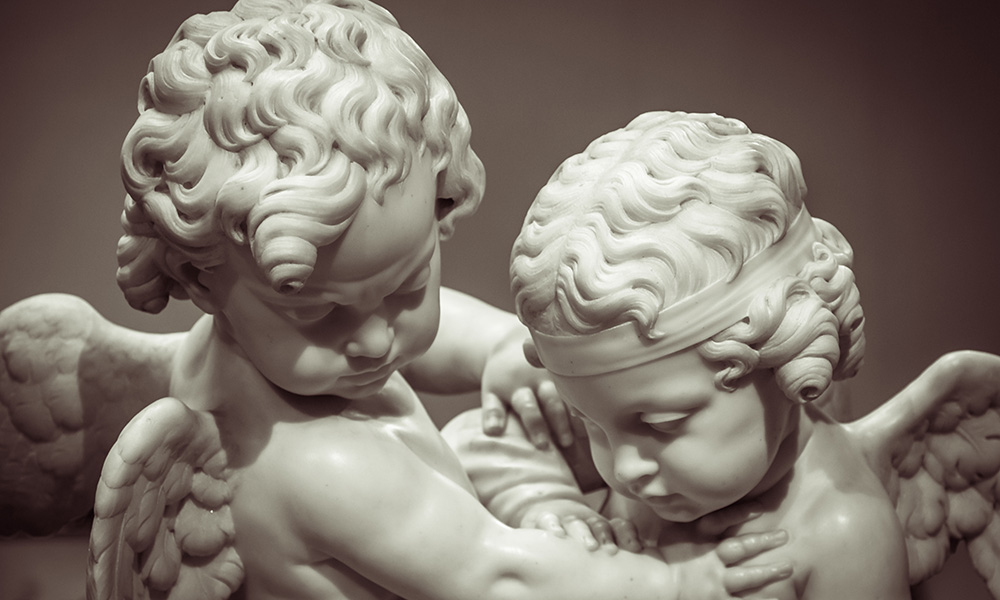The word for “angel” in both Hebrew and Greek means “messenger.” The name we give angels thus denotes their function, not their nature. They are spiritual creatures of God, formed to serve Him.
One particular kind of angel, the cherub, appears in several places in the Old Testament. (“Cherubim” is simply the plural form of the Hebrew word cherub.) When God expelled Adam and Eve from the Garden of Eden, He placed cherubim to guard the entrance of the garden to prevent them from returning and partaking again of the tree of life (see Gn 3:24). The book of the prophet Ezekiel includes an extended description of the form certain cherubim took when they appeared to him in a vision (see chapters 1, 8, 10).
The Old Testament frequently refers to God as “enthroned upon the cherubim” (Is 37:16; see also 1 Sm 4:4; 2 Kgs 19:15; Ps 80:2; Ps 99:1). This notion reflects the design of the tabernacle of the temple as commanded by God: In the Holy of Holies, the Ark of the Covenant was known as the “mercy seat,” the earthly throne of God. At each end of the mercy seat stood a wooden figure of a cherub, overlaid with gold, with outstretched wings (see Ex 25:17-22).
Such an arrangement reflected the intimate relationship between God and the cherubim. An even more striking statement of that closeness pictures a cherub as God’s chariot: “He mounted a cherub and flew” (2 Sm 22:11).
In the fourth or fifth century, the author now known as Pseudo-Dionysius the Areopagite wrote a book called “The Celestial Hierarchy.” Employing terms from Scripture used to describe various categories of angels (see, for example, Gn 3:24; Is 6:2-7; Rom 8:38; Eph 6:12; Col 1:16; 1 Thes 4:16; Jude 9), he arranged these into a system of “hierarchies” or “spheres” or “triads” of angels, each containing three “orders.”
In the first (highest) hierarchy he included, in order, seraphim (the plural of “seraph”), cherubim and thrones. The second hierarchy included principalities, virtues and powers. The third hierarchy was composed of dominions, archangels and angels. Cherubim were thus placed in the second-highest angelic position, lower than seraphim alone.
This hierarchical arrangement has been widely accepted in the Catholic tradition, with some variations among the Doctors of the Church. But even though the existence of angels is a part of definitive magisterial teaching, no doctrine about a specific hierarchy is de fide (“a truth of the faith”).
Why are cherubim portrayed by artists as chubby babies?It is purely artistic sentimentality, appearing only quite late in Western painting. Consider how the cherubim that Ezekiel saw took a dazzling, terrifying form, full of wings and wheels, faces and eyes, roaring and spewing forth bolts of lightning.
You may recall that whenever an angel appeared in the Old or New Testament narrative, his first message was “Do not be afraid.”Angels must be awesome creatures. I daresay artists who picture them as fat babies will have a great shock when they meet the angels in heaven. And the angels may have some sharp words of correction for the artists.

